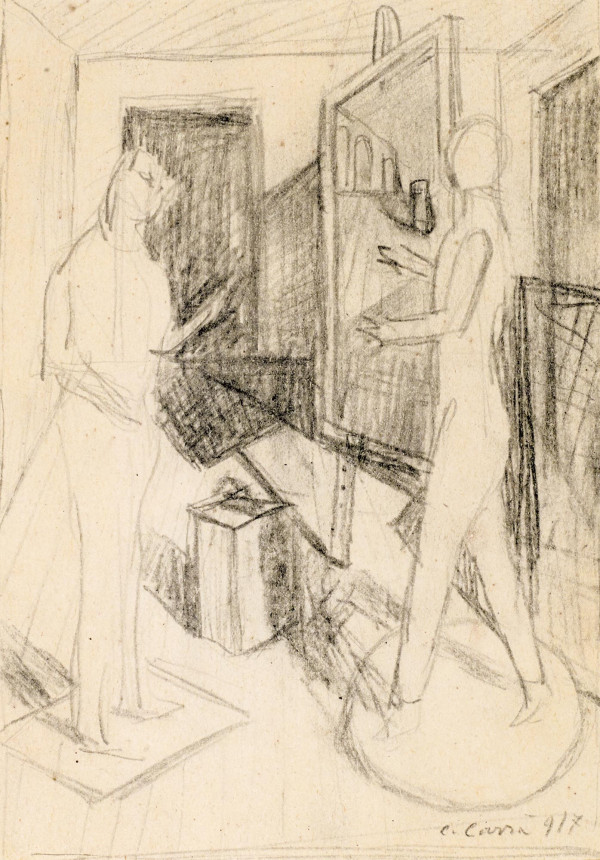
The Birth of Metaphysical Art
Metaphysical art, or ‘Pittura Metafisica’, emerged in Italy during the early 20th century. Spearheaded by two visionary artists, Giorgio de Chirico and Carlo Carrà, this movement sought to transcend the confines of reality and delve into the mysterious realms of the subconscious. Metaphysical art is characterised by dreamlike landscapes, enigmatic cityscapes and an eerie sense of stillness.
Giorgio de Chirico and Carlo Carrà
Often regarded as the father of Metaphysical art, de Chirico’s works typically depict deserted city squares, bizarre collection of objects and classical statues. His iconic painting, The Revolt of the Sage, epitomises the Metaphysical style, inviting viewers to ponder the mysteries of time and existence.

Giorgio De Chirico subscribed to Schopenhauer’s notion that losing one’s memory is akin to madness, since it is no longer possible to make sense of the world. His works evoke this state of disorientation by juxtaposing objects that seem to have no logical relationships with one another. Considered in this light, The Revolt of the Sage may be the symbolic depiction of a philosopher’s descent into insanity, no longer being able to connect the thoughts in his mind (represented here as an assortment of objects cluttering a steeply-pitched attic or lumber room). The iconography of this particular work was partly based on shop window displays seen by the artist in Ferrara during World War One, which contained “sweets and biscuits with remarkably metaphysical and strange shapes”. Estorick purchased this work in 1954 from Roland Penrose, the influential collector, artist and associate of the Surrealists.
A co-founder of the Metaphysical art movement, Carlo Carrà contributed his own unique vision. His painting The Engineer Mistress combines elements of Metaphysical art, portraying an imaginary event that is both haunting and thought-provoking.

This small and mysterious oil painting by Carlo Carrà depicts a barren, desert-like landscape; in the foreground stands what appears to be the fragment of a sculpture made of stone or plaster: the disembodied head of a female figure (presumably, the Engineer’s Mistress of the title). Unlike his Mistress, the Engineer is not depicted but is instead represented by these two attributes – the tools of his trade. We encounter this strange, incongruous collection of objects at an indeterminate time of day: a glimmer of light along the horizon, which separates the dark brown of the landscape from the deep blue of the sky, could either signify dusk or dawn. With its enigmatic character, the work relates to Carrà’s experimentation with Metaphysical painting. He had been a key representative of this style around the time of World War One, when he worked alongside the visionary artist Giorgio de Chirico.
Our Collection offers a unique opportunity to explore the profound and enigmatic world of Metaphysical art. Giorgio de Chirico, Carlo Carrà, and their contemporaries opened a portal to the realm of the metaphysical, where the boundaries of reality blur, and the mysteries of the mind are laid bare. As you step into this metaphysical realm at the Estorick Collection, you embark on a journey of introspection and contemplation, where art transcends the tangible and becomes a conduit to the mysterious depths of human consciousness.
In-depth reading
Giorgio de Chirico: Myth & Mystery
The Enchanted Room: Modern Works from the Pinacoteca di Brera